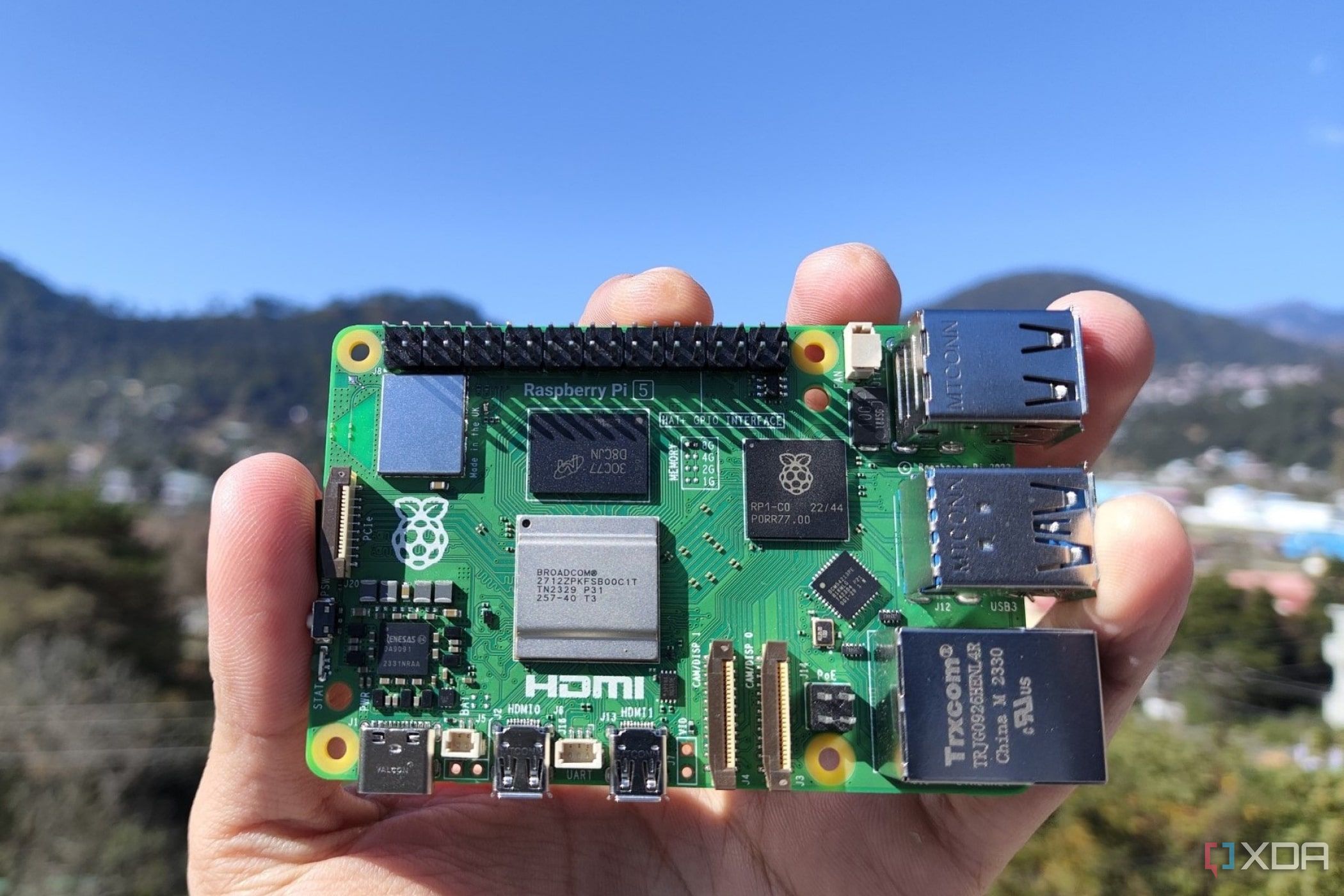So, you've got this awesome Raspberry Pi sitting on your desk, ready to take on the world—or at least your home network. But wait, what happens when you need to use it behind a firewall without exposing its MAC address? This is where things can get a little tricky. Using a Raspberry Pi behind a firewall without MAC isn’t impossible, but it does require some clever tricks and a bit of technical know-how. Don’t worry, we’ve got your back. Let’s dive in!
Imagine this: you’re setting up a project that involves remote access to your Raspberry Pi, but you’re working in an environment where firewalls are tight and privacy is paramount. The last thing you want is to expose your device’s MAC address, which could compromise your security. This guide will walk you through exactly how to set up your Raspberry Pi securely, ensuring it stays hidden from prying eyes while still being fully functional.
Whether you’re a seasoned tech enthusiast or just starting out with Raspberry Pi, this article will cover everything you need to know. From configuring your network settings to using advanced tools for secure access, we’ve got all the steps laid out for you. Let’s make sure your Raspberry Pi stays safe and operational, even behind the toughest firewalls!
- Martin Rivers Biography Movies Music Net Worth More Discover Now
- Skyy South More Pornhubs Hottest Gay Scenes Xxx Fun
Understanding the Basics of Firewalls and MAC Addresses
Before we jump into the nitty-gritty, let’s break down what firewalls and MAC addresses are all about. A firewall is essentially a security system that monitors and controls incoming and outgoing network traffic based on predetermined security rules. Think of it as the bouncer at a club—only the right people (or data packets) get in.
On the other hand, a MAC address is a unique identifier assigned to network interfaces for communications at the data link layer of a network segment. It’s like your device’s fingerprint, and exposing it can lead to potential security risks. When you’re working behind a firewall, you want to keep that fingerprint hidden to maintain anonymity and security.
Now, here’s the kicker: when you’re using a Raspberry Pi, you need to ensure that it can communicate with the outside world without revealing its MAC address. This is especially important if you’re dealing with sensitive data or working in a corporate environment where security is top priority.
- Ryan Lowes Shock Preston Exit The Full Story Whats Next
- Cj Jacks Gay Porn Hot Videos Exclusive Scenes
Why You Should Use Raspberry Pi Behind a Firewall
Raspberry Pi is a powerful little device that can do everything from running a media center to hosting a web server. However, when you’re working in an environment with strict security measures, you need to be careful about how you set it up. Using Raspberry Pi behind a firewall offers several advantages:
- Enhanced Security: Firewalls provide an extra layer of protection, ensuring that only authorized traffic reaches your Pi.
- Privacy: By hiding your Pi’s MAC address, you reduce the risk of unauthorized access and potential data breaches.
- Stability: Firewalls can help manage network traffic, ensuring that your Pi runs smoothly without being overwhelmed by unnecessary data.
But here’s the thing: setting up your Raspberry Pi behind a firewall isn’t as simple as plugging it in and hoping for the best. You need to configure your network settings carefully and use the right tools to ensure everything runs smoothly.
Setting Up Your Raspberry Pi for Secure Access
Now that you understand the importance of using Raspberry Pi behind a firewall, let’s talk about how to set it up. The first step is to configure your network settings. Here’s what you need to do:
Step 1: Update Your Raspberry Pi
Before you start messing with firewalls and MAC addresses, make sure your Raspberry Pi is up to date. Open the terminal and run the following commands:
sudo apt update and sudo apt upgrade
This ensures that all your software is current and reduces the risk of vulnerabilities.
Step 2: Configure Static IP Address
A static IP address makes it easier to manage your Pi behind a firewall. To set one up, follow these steps:
- Open the terminal and edit the dhcpcd configuration file:
sudo nano /etc/dhcpcd.conf - Add the following lines at the bottom of the file, replacing the placeholders with your desired IP address, router IP, and subnet mask:
interface eth0 static ip_address=192.168.1.100/24 static routers=192.168.1.1 static domain_name_servers=192.168.1.1
Save the file and reboot your Pi: sudo reboot.
Step 3: Change the MAC Address (Optional)
If you really want to hide your Pi’s MAC address, you can change it using a tool like macchanger. Install it by running:
sudo apt install macchanger
Then, use the following command to change the MAC address:
sudo macchanger -r eth0
This will generate a random MAC address for your Ethernet interface. Note that this step is optional and may not be necessary if your firewall is configured correctly.
Using SSH for Secure Access
One of the best ways to access your Raspberry Pi securely is by using SSH (Secure Shell). SSH encrypts all communication between your Pi and your computer, ensuring that no one can intercept your data.
Enabling SSH on Raspberry Pi
To enable SSH on your Raspberry Pi, follow these steps:
- Open the terminal and run:
sudo raspi-config - Navigate to
Interfacing Optionsand selectSSH. - Choose
Yesto enable SSH and then exit the configuration tool.
Once SSH is enabled, you can connect to your Pi from another computer using an SSH client like PuTTY (Windows) or simply the terminal (Mac/Linux).
Configuring Firewall Rules for SSH
If your firewall blocks SSH traffic by default, you’ll need to configure it to allow connections on port 22 (the default SSH port). Here’s how to do it:
- Log in to your firewall’s admin interface.
- Locate the section for managing inbound rules.
- Create a new rule that allows traffic on port 22 from your trusted IP addresses.
Make sure to restrict access to only the IPs you trust to prevent unauthorized access.
Advanced Techniques for Secure Access
While SSH is a great way to access your Raspberry Pi securely, there are other advanced techniques you can use to further enhance your setup:
Port Forwarding
Port forwarding allows you to map an external port on your firewall to an internal port on your Raspberry Pi. This is useful if you want to access your Pi from outside your local network.
- Log in to your router’s admin interface.
- Find the section for port forwarding and create a new rule.
- Map an external port (e.g., 2222) to port 22 on your Pi’s internal IP address.
Now, you can connect to your Pi from anywhere in the world by accessing your router’s external IP address on port 2222.
Tunneling with SSH
SSH tunneling allows you to securely forward traffic between your local machine and your Raspberry Pi. This is especially useful if you need to access services running on your Pi, such as a web server or database.
To set up an SSH tunnel, use the following command:
ssh -L 8080:localhost:80 pi@your-pi-ip
This command forwards traffic from port 8080 on your local machine to port 80 on your Pi, allowing you to access its web server securely.
Tools and Software for Managing Raspberry Pi Behind a Firewall
There are several tools and software that can help you manage your Raspberry Pi behind a firewall more effectively:
1. Pi-Hole
Pi-Hole is a network-wide ad blocker that runs on your Raspberry Pi. It can help reduce unwanted traffic and improve your network’s performance. Install it by running:
curl -sSL https://install.pi-hole.net | bash
2. Docker
Docker allows you to run applications in isolated containers on your Raspberry Pi. This can be useful if you’re hosting multiple services and want to keep them separate for security reasons. Install Docker by following the official instructions for Raspberry Pi.
3. WireGuard
WireGuard is a modern VPN solution that provides secure and fast connections. It’s a great choice if you need to access your Raspberry Pi remotely over an encrypted connection. Install it using the official Raspberry Pi documentation.
Best Practices for Securing Your Raspberry Pi
Now that you know how to set up your Raspberry Pi behind a firewall, here are some best practices to keep it secure:
- Use Strong Passwords: Always use strong, unique passwords for your Pi and any services running on it.
- Keep Software Updated: Regularly update your Pi’s software to patch any vulnerabilities.
- Limit Access: Restrict access to your Pi to only the IPs you trust.
- Monitor Logs: Keep an eye on your Pi’s logs to detect any suspicious activity.
By following these best practices, you can ensure that your Raspberry Pi remains secure and operational, even behind the toughest firewalls.
Common Issues and Troubleshooting
Even with the best setup, things can go wrong. Here are some common issues you might encounter and how to fix them:
Issue 1: Unable to Connect via SSH
If you’re unable to connect to your Raspberry Pi via SSH, check the following:
- Ensure SSH is enabled on your Pi.
- Verify that your firewall allows traffic on port 22.
- Check your Pi’s IP address to make sure it’s correct.
Issue 2: Slow Network Performance
If your network performance seems slow, try the following:
- Optimize your Pi’s network settings.
- Limit the number of services running on your Pi.
- Use a wired connection instead of Wi-Fi for better stability.
Conclusion: Take Control of Your Raspberry Pi
Using Raspberry Pi behind a firewall without exposing its MAC address is a great way to ensure its security and privacy. By following the steps outlined in this guide, you can set up your Pi securely and manage it effectively, even in the most restrictive environments.
So, what are you waiting for? Grab your Raspberry Pi, follow these tips, and take your projects to the next level. And don’t forget to share this article with your fellow Pi enthusiasts. Together, we can make the world of IoT a safer and more secure place!
- Remembering Kyle Cassel Obituary Memories Condolences
- Papi Mikey Dinero New Music Criminality Explored


